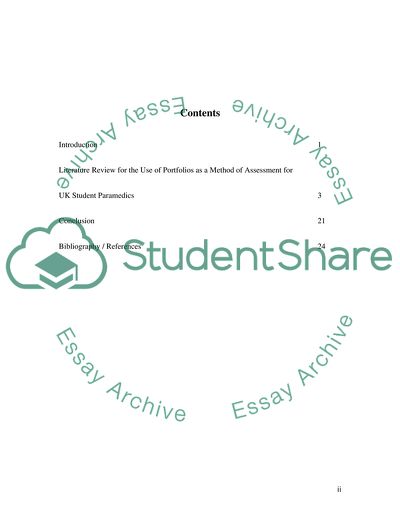Cite this document
(Portfolios as a Method of Assessment for UK Student Paramedics Assignment, n.d.)
Portfolios as a Method of Assessment for UK Student Paramedics Assignment. Retrieved from https://studentshare.org/education/1739264-literature-review-portfolios-as-a-method-of-assessment-for-uk-student-paramedics
Portfolios as a Method of Assessment for UK Student Paramedics Assignment. Retrieved from https://studentshare.org/education/1739264-literature-review-portfolios-as-a-method-of-assessment-for-uk-student-paramedics
(Portfolios As a Method of Assessment for UK Student Paramedics Assignment)
Portfolios As a Method of Assessment for UK Student Paramedics Assignment. https://studentshare.org/education/1739264-literature-review-portfolios-as-a-method-of-assessment-for-uk-student-paramedics.
Portfolios As a Method of Assessment for UK Student Paramedics Assignment. https://studentshare.org/education/1739264-literature-review-portfolios-as-a-method-of-assessment-for-uk-student-paramedics.
“Portfolios As a Method of Assessment for UK Student Paramedics Assignment”, n.d. https://studentshare.org/education/1739264-literature-review-portfolios-as-a-method-of-assessment-for-uk-student-paramedics.


